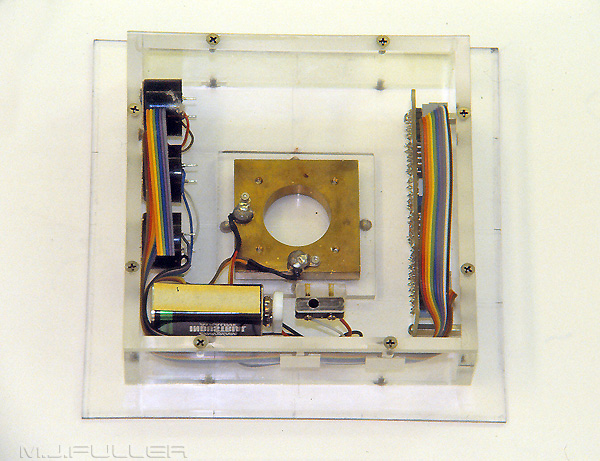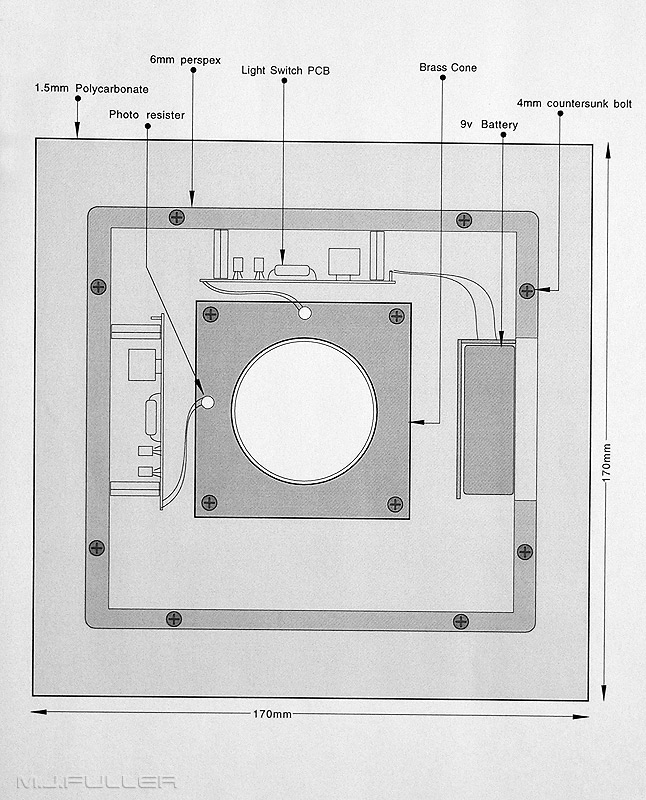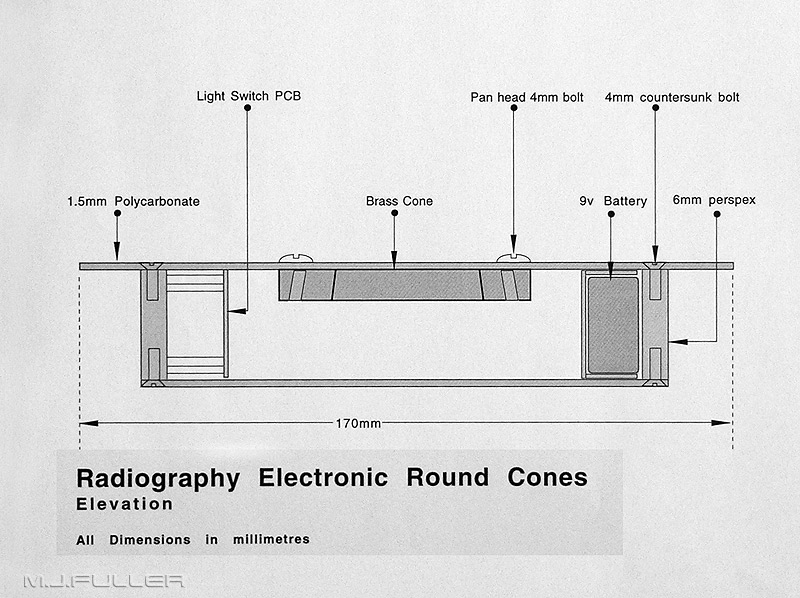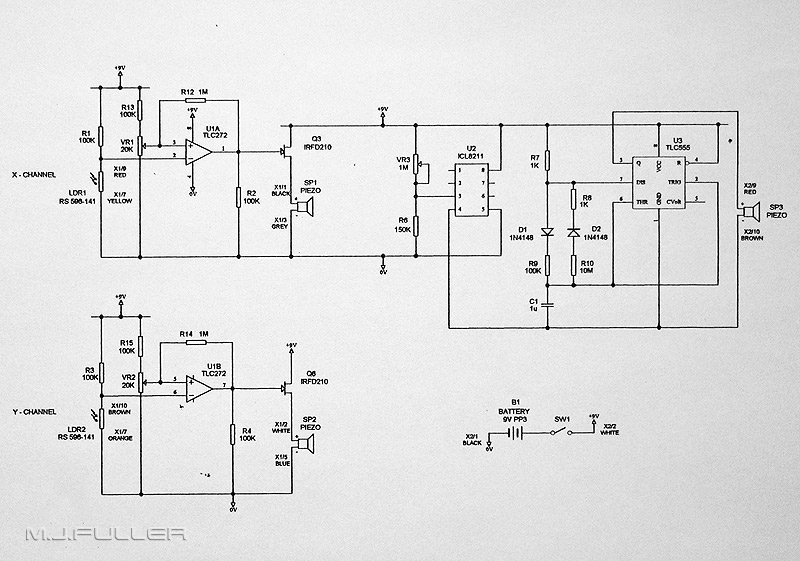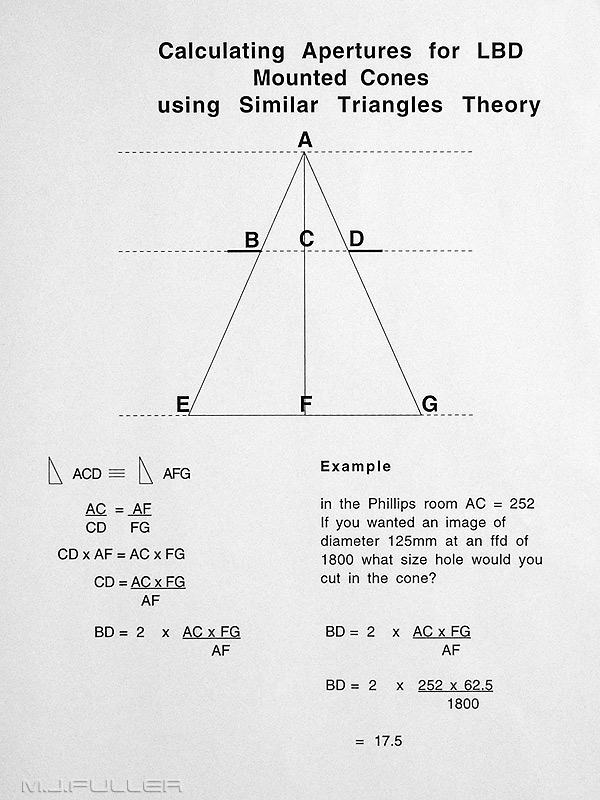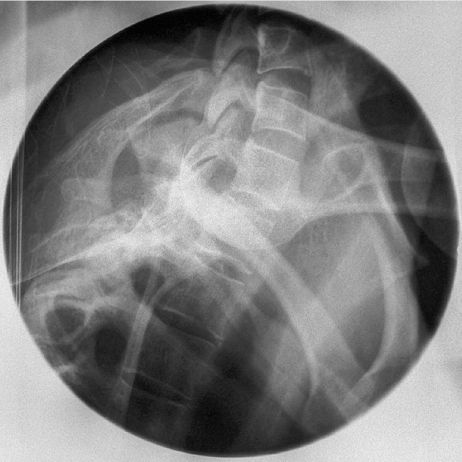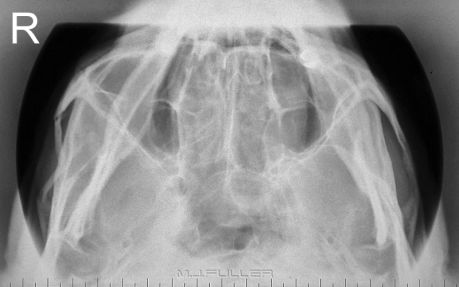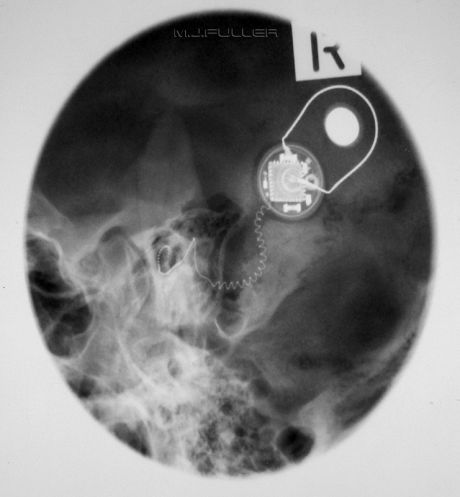The Smart Cone
Introduction
Utilizing a circular radiation field has distinct advantages in terms of radiation protection, reduction in scatter radiation and aesthetics. This page looks at a device known as a smart cone which is a lightweight electronic device designed to be mounted on the light beam diaphragm (LBD) to produce a circular radiation field.
Design
The concept behind the smart cone was to reduce the stress on the LBD by reducing the weight of the cone. The heaviest part of the cone is the brass cone/block itself. Minimising the size of the machined brass block would leave open the undesirable possibility of coning outside the brass block. The smart cone senses any LBD light falling outside the central hole machined in the brass block. If the radiographer has the LBD cones too far outside the hole in the brass block, sensors detect the LBD light and emit a high pitched warning sound.
Construction
The casing is made of perspex sheet. The three black structures are piezo buzzers- one is for low battery level, and the other two emit different frequency warnings if the corresponding LBD cone is too far open.Drawings
These are the drawings of the original prototype and illustrate some of the concepts involved. The battery was mounted using hook and loop tape. This was inconvenient and should be replaced with a battery drawer to facilitate easy of battery replacement.Application
The round cones are most usefully applied for radiographic projections where the anatomy is better suited to a round radiation field. This may be the case for anatomy which is characteristically round (eg lateral skull) or where the corners of the image offer no useful information (eg AP hip). Importantly, the round cones reduce scatter radiation and are usefully employed on high dose/high scatter views such as the lateral horizontal ray hip and swimmers views.
Electronics
The electronics can be designed in a number of different ways. The central concept of the electronics is the use of two photoresistors which act as switches. When the light from the LBD falls directly on one of the photoresistors the photoresistor will "switch on" and allow current to pass through it. This will activate the piezo buzzer alerting the radiographer to cone in. Once coned in sufficiently, no LBD light will fall on the photoresistor and it will turn off the piezo buzzer.
There is a microswitch incorporated into the design such that when the cone is placed on a flat surface (when not in use) the microswitch will turn the electronics off. This will lengthen battery life.
There are three pots in the circuit which can be adjusted for photoresistor sensitivity and for the low battery signal voltage threshold.
One version of the circuit diagram is shown below
Calculating The Hole Size
The size of the hole in the brass cone can be calculated using Similar Triangles Theory. Three smart cones were made to suit small anatomy (eg lateral oblique TMJs), medium sized anatomy (eg facial bones, sinuses) and large anatomy (eg lateral skull). The size of the hole in the brass block can be calculated for a specific LBD as shown below. (My highschool algebra workings are shown... not my strong subject!)
If you are able to vary your FFD, the hole sizes can be easily adjusted. The holes machined in the brass blocks featured different tapers to reflect the differences in the divergence angles of the X-ray beam for the different hole diameters.
Examples
Conclusion
The smart cones have proven themselves a useful radiographic accessory over many years. Clearly, making the cones is a challenging task. It would be reasonable to consider making the cones with a single brass block (and no electronics) if the LBD is rated to carry the weight. It is also important to ensure that the cones cannot fall on a patient- a safety line to the LBD is a good idea.
....back to the applied radiography home page here
